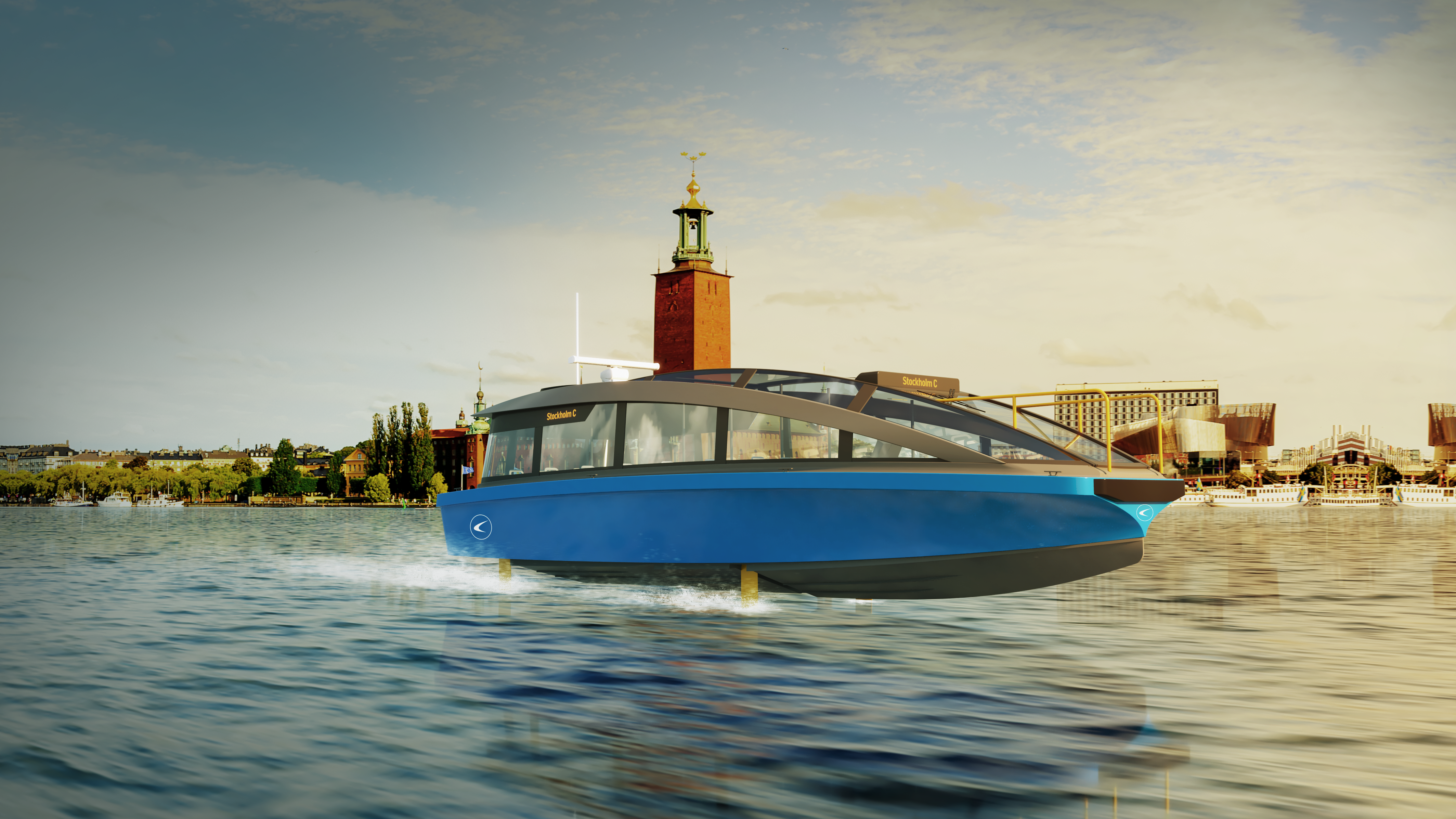
The Swedish capital, besides the Abba Museum of course, is known for its archipelago. Off the coast of Stockholm there are about 30,000 islands. A good number of these are inhabited and can be visited. Every day about 60 diesel ships shuttle between the city center and the archipelago for both residents and tourists.
This will change next year. Stockholm’s public transport offer will be expanded to include a new means of transport: an electric hydrofoil that will transport passengers between the main city center and the islands.
It is, the creators tell us, the first of its kind. When commissioned in 2022, it will be the first electric ferry to reach such a high speed (up to 30 knots, or about 55 kilometers per hour) and to travel as far as this without having to be recharged (60 nautical miles, about 111 kilometers). The ship recharges at end destinations, during shorter stops and during the captain’s breaks.
‘Electrification of marine traffic’
The makers’ mission is the “electrification of marine traffic,” says Mikael Mahlberg of the Candela company, which is producing the Candela P-30 ship in cooperation with the Swedish Transport Authority. “The most effective way to reduce emissions at sea is to replace ferries, especially since many of those ships run on diesel.”
Because of the Candela’s hydrofoil technology – where the boat floats above the water, as it were, on a wing below the surface of the water – friction is minimal. This saves energy and allows the boats to travel longer distances on one battery charge. The battery is then recharged at final destinations and during the captain’s breaks.

Then there is the added benefit that the technology causes little or no wave action. “You can sail at full speed without disturbing other boats,” Mahlberg says. “That means in practice that you can travel faster than with any other ferry. Plus, it’s more environmentally friendly and cost-efficient.”
The electric ferry should be about 80 percent more energy efficient than today’s best fast ferries. Stockholm estimates that the new vessel will also be 40 to 50 percent cheaper annually than the marine vessels that are currently commonly used.
Saving money
The innovative ferry uses about three kilowatt hours per nautical mile, about one-tenth of the consumption of a conventional ship. This is comparable to the energy consumption of an electric hybrid bus. Can this model eventually replace the entire fleet of sixty ferries? “We are aiming for that,” says Mahlberg. Stockholm, he says, is also interested. It would save them a lot of money, in addition to a substantial amount of emissions.
But there are still some obstacles to overcome for that. For example, there is only room for 30 passengers on the envisioned electric model, whereas 200 people often fit on the current Stockholm ferries. “Those boats are made for rush hour. But usually there are at most fifty passengers on board,” Mahlberg says. “Our proposal is to replace the large ships with a number of smaller boats that depart with greater regularity than the current ferries. That would provide a more flexible and efficient public transport system.”
Read also: A high-speed train to take you from Lisbon to Helsinki – and further
Infrastructure
He continues: “At present, most waterways are not yet used for public transport. The use of fast, electric ferries could solve congestion in and around cities. It would offer a solution in cities like Amsterdam, Seoul and San Francisco, especially since you wouldn’t have to build any new infrastructure for it.”
It isn’t just Sweden that sees a future in electric passenger ships. Watertaxi Rotterdam in the Netherlands, for example, also announced at the end of March that they are expanding their fleet with an emission-free boat. The battery-electric powered MSTX31, with room for 40 passengers, will soon be sailing through the waters of Rotterdam.
Read also: One in five flights can be electric (and the rest are being worked on)

